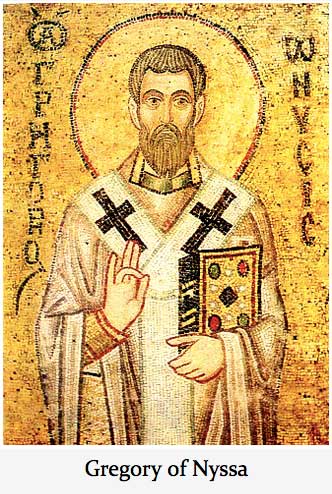Walking Tours of Faith
On the Ways & Whys of Pilgrimages & Pilgrims
April 13, 2018
It's embarrassing to make a typo; it would seem more excusable in a foreign language. But I find my error in writing a p for the Greek letter tau last week inexcusable. (My glasses were smudged.)
I am not a scholar, and definitely not a Greek scholar. For the record, I studied Greek with after high school in a class taught by a Baptist pastor; later I tested out of Introductory Greek in college and was allowed to take an intermediate course on Plato's The Apologia of Socrates. My teacher, tough as nails, held a Cambridge Ph.D. in Classics; I appreciated the rigor of his teaching.
Since then, I have dabbled; by no means would I claim fluency. I know how to read, use a lexicon, cross references, commentary, and work on Greek rust removal, a perpetual operation. As many have observed, reading a Biblical text in an original language forces you to slow down, which often results in seeing things you wouldn't otherwise see.
This explains while I enjoyed walking the streets when visiting a foreign city. My experiences and memories of places like Glasgow, Oxford, Moscow, and Rome, for example, not to mention Dallas (downtown), are more settled in an ambulatory mode, at ground level, amidst foot traffic. Foreign rides on buses were not memorable, even when the driver doubled as a tour guide. Let me out and walk—if it's not too far.
Something like this experience may explain the satisfaction that many pilgrims report when they return from the Holy Land, walking "where Jesus walked." I doubt a tour bus ride down the Via Dolorosa would measure up to walking the way on foot.
We do not have a great deal of testimony in the very early Church about pilgrimages and pilgrims; there is mention of visits to the Cave of the Nativity in the second century, as well as a cave on the Mount of Olives. Yet in the early centuries there was no word for pilgrim or pilgrimage; only later did peregrinatio take on a specialized meaning. (Encountering the Sacred: The Debate on Christian Pilgrimage in Late Antiquity by Brouria Bitton-Ashkelony, p. 18)

Gregory of Nyssa visited Jerusalem in the fourth century and wrote, "When I saw and felt the holy places, I became filled with such a great joy that words cannot describe it." (Ep. 3.3., Encountering, p. 51)
Yet Gregory also wrote,
"For us, we believed the fact that Christ who appeared on earth is the true God before we came to these places, just as after [we saw them] our faith did not increase or decrease. We knew the Incarnation through the mediation of the Virgin before we saw Bethlehem; we believed in the Resurrection before we saw the tomb; we believed in the truth of the Ascension without seeing the Mount of Olives." (Ep.2.15; Encountering, p. 56)
On the other hand, Cyril, bishop of Jerusalem in the mid-fourth century wrote that,
"Gethsemane bears witness. . . . Golgotha, the holy hill standing above us here, bears witness to our sight; the Holy Sepulchre bears witness, and the stone that rests there to this day. . . . The Mount of Olives bears witness, that holy mount from which He ascended to the Father" (Catech. 10.19, Encountering, p. 59)
And Jerome wrote, "To worship on the spot where the feet of the Lord once stood is part of the faith." But he also wrote, to Paulinus of Nola, "Do not think that your faith is lacking because you have not seen Jerusalem." (p. 85)
Which is it? Both; it depends on God's grace to each person. Jesus said, "Blessed are those who have not seen and yet believe." He said that to Thomas—to whom he also said, "Put your finger here, and see my hands; and put out your hand, and place it in my side."
All creation witnesses to the Lord. There are signs and wonders; there is the Word; there is a miraculous healing of someone. The Lord offers us His hands to examine, and invites us to put out our hands to place in His side, wounded for our transgressions. And he still says, "Blessed are those who have not seen and yet believe." These are many steps to faith, and we see and walk with the eyes of faith, toward the Risen Lord, one step at a time.
Yours for Christ, Creed & Culture,

James M. Kushiner
Executive Director, The Fellowship of St. James
—James M. Kushiner is Executive Editor of Touchstone: A Journal of Mere Christianity, and Executive Director of The Fellowship of St. James.







